#Welsh Sheep Farm
Text
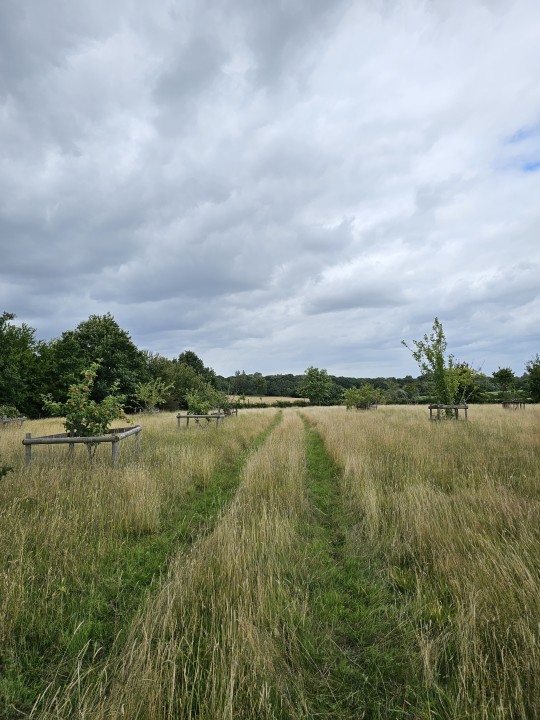


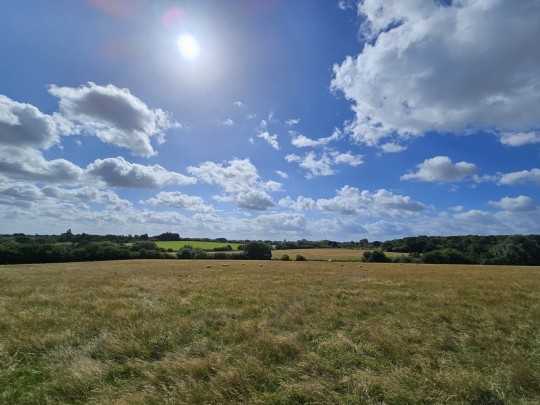
12.08.23 | saturday morning field checks ft a Lleyn ewe (bottom left) and a Manx Laughton ewe (top right).
#studyblr#study#studyspo#urban study#farm#farming#sheep#I may have misspelled laughton lol#either way Lleyns are a welsh breed while Manx come from the Isle of Man#slash posts#sheep posting
18 notes
·
View notes
Note
Hi! Big fan :) You're an environmental lecturer, right? I recently got into a debate with someone about rewilding in the UK, and the clash with farmers and agriculture. To me, this is a no-brainer - I absolutely do feel for farmers losing their livelihoods, and I think there needs to be a system to help them transition to something else, but also, the planet is dying. But you explain things well, so I wondered if you have thoughts? Particularly on the Welsh side of things. Thank you in advance!
Hah. I literally have a lecture on this. Or, well, a chunk of a lecture, anyway; so yes! I have thoughts. I'll use those notes, and stick a big reference at the end in case you want to read more
I'll talk about this specifically from the Welsh perspective, okay so:
The rewilding project in Wales is the Cambrian Wildwood, launched in 2004ish by a guy who bought an abandoned farm in the northern end of Mid Wales with the express intention of rewilding it. The aim is to convert some 7000 acres, and the initial mission statement said they'd reintroduce wolves and lynx. That's the project I'm going to talk about, because it's a great case study for how to spectacularly fuck something up (and eventually realise you've spectacularly fucked up, and do something about it.)
These are the Cambrian Mountains:

When looking at that, there are two competing viewpoints that are relevant here:
The Cambrians are ecologically depleted. Their biodiversity has crashed since the Second World War, when modern farming methods were introduced. Environmentally, there is a perception of emptiness and degradation.
The landscape is a glorious one that has been shaped by the human actions taken on it for generations, as we are a shepherding culture – culture and land are inextricably intertwined.
That's a big fundamental difference! Two people can look at that same photo, and see something diametrically opposed. But there's more lying on it, so you also need to understand the socio-political background.
Socio-Political Background
(I know! Headings! So professional)
A lot of rewilding – Cambrian Wildwood included – is taking place in areas where farming is declining for various political/socio-economic reasons, so this can be ENTIRELY FAIRLY seen as yet another threat. This goes hand in hand with rural migration and community decline, too.
In Wales, we’re mostly rural, and characterised by extensive upland livestock farming (sheep in particular). Most farms are small to medium family-run setups. ON TOP OF THAT, the vast majority of Welsh farmers are Welsh-speaking, and the right to operate a farm the ‘traditional’ way without UK government oversight is seen by Welsh Nationalists as an important post-colonial act.
Many of them didn’t even like the National Parks being set up, as they were seen as an English outsider imposition that ignored the working nature and cultural history of the land. Remember: the farmed uplands are often seen as a heartland of Welsh identity, and those have historically been intentionally destroyed by UK central government land management decisions (e.g. Tryweryn, Elan, Claerwen, etc)
“Over the past half century we have witnessed the arrival of countless environmental fundamentalists… seemingly oblivious to the fact that their new-found paradise is already occupied by people whose connection with the land is deep rooted, dates back thousands of years, and is embedded in their language and culture.” (Nick Fenwick [Farmers’ Union of Wales] 2013)
SO IT’S CULTURALLY DICEY
(And in my opinion an incredibly stupid idea to go and give it a primarily English name with a Welsh translation as an afterthought but that is Elanor’s Opinion and not Scientific Fact)
(But fr fr if you ever have to get involved in these sorts of projects you will go a long way if you have the basic respect of learning the Welsh names and pronouncing them right rather than lazily expecting everything to be in English sorry sorry I digress)
From the Cambrian Wildwood’s Mission Statement on their website, their objective is:
“To rewild or restore land to a wilder state to create a functioning ecosystem where natural processes dominate by carrying out habitat restoration, removing domestic livestock, and introducing missing native species as far as feasible.”
Can you see the controversial bit of the statement
Can you see the bit where they directly say they want to remove domestic livestock
Jesus Christ
Cultural Differences
AND THEN HERE'S THE BIGGER PROBLEM
‘Culture’ in Welsh is diwylliant – literally, a ‘lack of wildness’. There is no direct translation into Welsh for the term ‘rewilding’ – the closest you can get is anialwch or diffeithwch, which mean ‘wilderness’ in the sense of ‘desert’ or ‘wasteland’. So right off the bat, if you tell a Welsh-speaking farmer that you want to rewild the place, what they hear is "We want to make it dangerous and empty and degraded."
A related concept is cynefin - knowing one’s ‘patch’ and the feeling of belonging associated. The term has its roots as a description of the way grazing animals know their area of mountain land, but it is also used to describe how people come to form an intimate experiential knowledge of place - and specifically, a Welsh farmer's cultural attitude.
Basically, Welsh literature and oral traditions speak of a relationship with the land, not a separation and longing for an untouched wilderness. Farmers feel this especially keenly. Culturally, this is a big part of why they do it – they’re rooted to the land, and therefore to their identities.
“Interviewees conveyed this by referring to areas proposed for rewilding as being comprised of “a quilt of cynefinoedd: interwoven stories, the layered and collective place-making of families and individuals over-generations, co-constituted with the physical landscape” (Wynne-Jones, Holmes and Strouts, 2018)
So, to them, rewilding is erasing and disregarding these stories. To them, this is not just a land-use change, but the latest colonial attack. They've known the family who lived on that farm for generations - every birth, marriage, death, joy, triumph, loss, everything. You are saying that you are going to strip that family, all those stories, all those people out of that land, to be forgotten.
…
However. There is a counterpoint to this.
Many farmers taking this view have therefore identified themselves as the only “truly Welsh” people in the debate, accusing environmentalists as being outsiders. The problem with this being, most of the environmentalists involved with the project are also Welsh; so who the fuck are they to say who is or is not Truly Welsh? It's what we on the internet would recognise as gatekeeping, with a big side order of No True Scotsman fallacy.
Also this quote sums it up well:
“Sheep farming in this country goes back a few hundred years. I think if you go deep enough into our culture and ancestry, we have a really deep native relationship with wild forest areas and with the wild animals that are native to this country…I just don’t agree that sheep farming is really part of our traditional culture.” (WWLF Interview [15] 2016) (Wynne-Jones, Holmes and Strouts, 2018)
This is also a fair point. It is true that upland sheep farming, the way we now practice it, is only a few hundred years old, and at the current intensity only a few decades (since WW2).
On top of which, there has been plenty of exploration over the years of farmers as being a government-subsidised landed gentry, which I won't go into here, but it also contains some fair points.
In truth, all of it and none of it is true. It’s far more complex and nuanced than either side might want to believe.
Solutions So Far
This is an ongoing project and they're still learning and changing new things and stuff, but a big thing they did was get someone in to basically be a mediator and listen to both sides, because Jesus, those sides were not listening to each other.
But to date:
They actually worked with a first-language Welsh speaker (WHY DID THEY NOT DO THIS FIRST I'm sorry I'm fine). Originally the Welsh translation of the project was Tir Gwyllt – wild land. But given that Welsh connotations with gwyllt are something out of control or dangerous, Coetir Anian has been chosen – anian refers to a sense of natural order and creation, a sense of health and vitality.
Similarly, ‘rewilding’ is being translated as ‘di-ddofi’ – ‘de-taming’. This acknowledges the labour and culture taken to tame it, and just suggests an avenue for discussing some relaxation of farming practice in appropriate locations rather than, you know, releasing packs of wolves directly into sheep pens
In online materials and in community engagement events where traditional storytellers and musicians have performed to celebrate the Wildwood, the trustees have drawn heavily from Welsh myth in the form of the Mabinogion. Enormous amounts of the Mab lovingly and respectfully feature wild woods and wild animals. The emphasis is therefore on how wilderness is also part of Welsh identity – and arguably a much older part, going back to the Celts. (This is clever, in my view, but something to approach with care - it's rarely a good idea to play the game of "What's the most Welsh". But so far it's been done sensitively)
Land purchased for the project has so far been wholly limited to that available in the public domain. The main site, Bwlch Corog, was empty and unfarmed for six years before purchase, which has been stressed in all media interviews and releases; this is important, because farmers do have a sense of "Productive land is being stolen by environmentalists".
Large predator reintroductions have largely been abandoned. Lynx and wolves are no longer on the agenda. It’s possible they’ll be included in the future, but it is acknowledged as currently impractical (both from clashes with farmers and lack of habitat).
Instead, they’ve supported smaller species reintroductions, such as the Vincent Wildlife Trust’s pine marten translocations, and some proposed red squirrel ones.
Bwlch Corog is to be managed as an experimental plot that farmers are encouraged to engage with.
Assessing the potential for new income streams (from improved tourism and educational activities) rather than just the ecological benefits – this has become central to the project, and the emphasis is on how this might benefit farming communities and keep them together. This has been huge, and has also been successful in rewilding schemes in Europe.
Tensions are a lot lower now than they were ten years ago, but ultimately the problem was a bunch of outsiders came in and decided they knew best without listening to anyone else's point of view, and that meant both sides really dug their heels in. Much better now.
Ultimately... yes, I am in favour of rewilding, in a general sense. But I think it needs to go hand in hand with supplying farmers with the necessary subsidies to transition back to more traditional and sustainable farming methods, and the two elements run side by side. You can't do one without the other, not if you want them to succeed. The Pontbren Project is a great case study for how a farmer-led scheme can successfully aid them economically while also improving environmental outcomes, and we need to learn and incorporate more lessons from it when discussing this kind of landscape-level management.
Also, with land management in general, I think you're a fucking idiot and dangerously arrogant if you think you can get anything done without all stakeholders being on board. And potentially wandering down the ecofascism path, circumstances dependent.
Anyway, those are my thoughts. Source:
Wynne-Jones, S, Holmes, G & Strouts, G (2018), 'Abandoning or Reimagining a Cultural Heartland? Understanding and Responding to Rewilding Conflicts in Wales - the case of the Cambrian Wildwood.' Environmental Values, vol. 27, no. 4.
825 notes
·
View notes
Photo

As of this week, I'm back from the Welsh mountains of Snowdonia, where my family and I went three weeks ago for a harp festival in which my daughter was participating. We spent most of our time in the castle city of Caernarfon, where the festival took place, and stayed across the street from a really big, really lovely old church at the base of Twthill, “Wales’s smallest mountain,” site of a Yorkist victory during the War of the Roses.
One of the days that we were there, I took a bus to nearby Bedgellert, ostensibly named for a noble but unjustly murdered 13th century dog, and set out to reach the top of Dinas Emrys, which lay outside the town and near a defunct Victorian copper mine (which I also crawled around in).
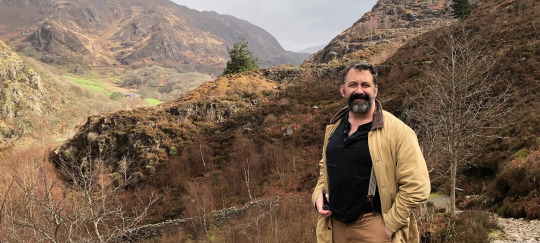
(outside the mines, before I started walking)
I wandered through a lot of countryside, woods, and sheep farms. The standard Welsh joke is "Don't like the weather? Wait five minutes," and that was the case - ten minutes heavy wind and rain, ten minutes sunshine, off and on for about four hours.


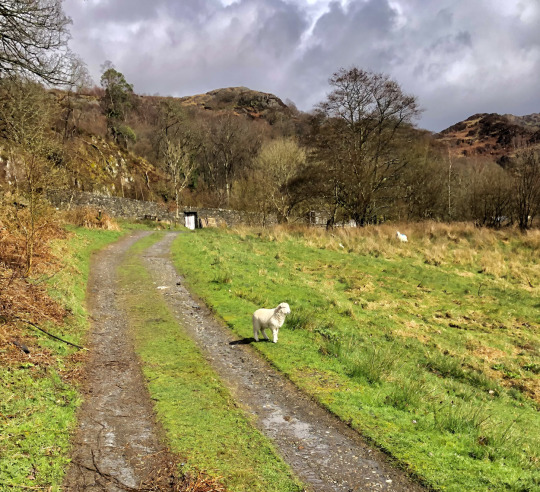









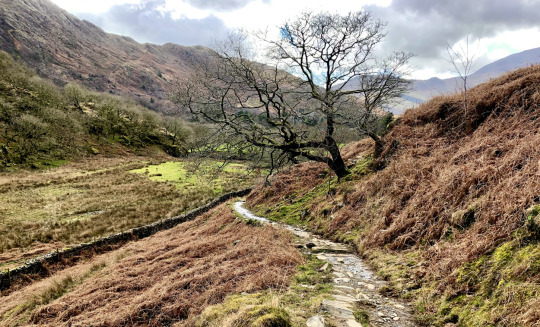
In the next pic, you can see the hillock of Dinas Emrys from before it crests upwards...

...and here it is from the top. The tree sits just outside the tower ruins (the pit to its immediate left).

I've never had such a beautiful walk to such a satisfying end. Not only was the peak gorgeous, but it also had the bonus of being a historical/mythical destination right up my alley.
The top of Dinas Emrys is where the oldest English/British histories (the 9th century Historia Brittonum and Geoffrey of Monmouth's famous History of British Kings* place the tower of Vortigern (and subsequently Ambrosius, in many versions the older brother and predecessor of Uther Pendragon), which in the legends had to be rebuilt numerous times because of the red and white Dragons that fought at the pool below it and which were taken by a (then young) Merlin as an omen for Welsh/Briton victory over eastern invaders.
*My pal Benito Cereno is currently translating Geoffrey's book from Latin, with some commentary, on his Patreon, and you can read his translation of the story here.
The sun was finally (consistently) shining by the time I got to the top, so I took off my shoes and socks to dry them, lit my pipe, set up my easel, and did some sketches of both the tower ruins and, once I climbed down to it, the hidden pool below.
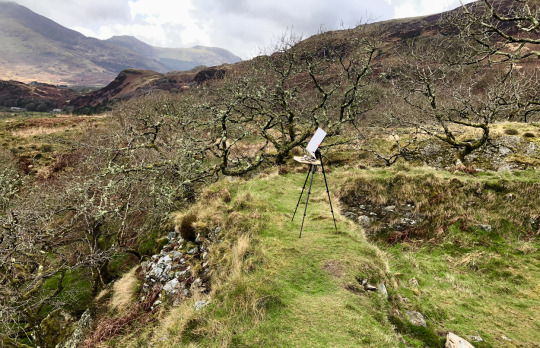

I was quite happy with the travel easel I'd built and carried for the last eight or nine miles, until the heavy wind took it off the side of the mountain and broke it. It's fixable, but not without tools that I didn't have in the mountains, so that was that.

I haven't finished most of the Dinas Emrys sketches - like a lot of my travel stuff, I pencil (and sometimes ink), throw a couple of spots of color, and take photos to use as reference, so that I can do more pieces on a limited traveling schedule. But I'm looking forward to finishing the drawings of the pool especially - it felt like I was in a fairy tale down there, and I hope I can convey it (although the leafless, windswept [I think] hawthorn trees, reaching toward the pool like hands, aren't like any trees I've ever tried to draw before this trip, and trying to get them right is part of the reason I ain't yet done).
The trip back down was less idyllic, partially because going down over wet rocks is, while less strenuous than going up, more demanding of care and attention, so I had to watch my feet more than the surroundings, especially having taken a fall up by the ruins. But I'd count the trek as one of the genuine high points of my life. I was elated and in awe for hours at a stretch, and absolutely overcome with the beauty of it. And, while the rain might've been unpleasant and chilly at times, it meant that the sun fought through water and clouds to create the most incredible vistas, and the rain meant that the colors of the mosses and grasses were at their most vivid.
I'll have castle drawings down the line, too, and some others from around the harbor town, and I can't stress how much we enjoyed our time in Wales.
I did take a few days to go up to Leeds, do a signing at Traveling Man, and visit the Royal Armouries a few times to do drawings. One of the folks who came to the signing, Dr. Tzouriadis, is a currator at the armouries and was kind enough to give me a tour on my last day in Leeds, including getting to see the research library, which I now know to make an appointment for visiting the next time I'm there (I likewise learned about the British Library reading rooms and research collection, and got a card for it for the next time I'm in London).
Dr. Tzouriadis was incredibly generous with his expertise, and I learned or clarified a lot of really neat things that'll influence how I draw swords and armor in the future. And I've had some practice this trip thanks to the incredible collections with which I had a chance to spend some time.
Each day over the month of May, I'll be posting one drawing of a sword (or other edged weapon) from either the Royal Armouries, the Tower armory, or the British Museum. It's jumping the gun a bit, but here's a sneak preview of the first one:

They're toned with a single color (indigo) so that I can collect them into a book in black and white and make both its manufacture and selling cost a bit less than I could were I to do color - it also cuts down on the time spent making them. I'll likely put them up for sale each day as I post them, likely for the same price (50 plus shipping?), as a means by which to recoup some of the (substantial) cost of the trip.
While in Leeds I also got to meet cartoonist James Lawrence, have dinner with cartoonist John Allison, and briefly stop by OK COMICS in the arcade, which was an incredible store with an amazing selection of books.
After Wales we went to London (Penny's first time), and Penny was unfortunately ill for a couple of days, so I spent time at the museum doing sketches, and visiting the library treasures gallery. We saw a couple of musicals that Penny was keen on seeing, went to Charles Dickens's house, visited the Tower, ate some cheap meat pie with jellied eels in Greenwich, toured Westminster and St Pauls (I went to a Eucharist service at the latter, as well as one in Wales in a lovely little church built into the castle wall more than seven hundred years ago), and a handful of other things, including seeing the Tempest at the Globe Theater - my first time seeing a play at the Globe, and my first time seeing the Tempest performed.

I also got to visit a whole store devoted to Tove Jansson's MOOMIN, where I got a mug and a biography of Jansson, and it was next door to the Benjamin Pollock's Paper Theater shop. I went to London disappointed that the Pollock paper theater museum had closed only months before after decades of operation, and didn't know that there was an (unaffiliated since the 80s) shop, so stumbling upon it was a real treat (stumbling is how I like to do cities - I walked crisscrossed the town between the Euston and the river and found some great shops, including a lot of bookstores).

Now that I'm home, I'm very keen to get back to work. I'll be doing Patreon commissions, coloring a book for my friend and frequent collaborator Kyle Starks, and just settling back into being able to work, which I missed an awful lot despite the wonderful trip.
101 notes
·
View notes
Text
there would be this evening where sirius and remus would be sitting in the corner of the common room, hugging into one of those cozy too sat on couch, cuddling and telling stories, and in one innocent moment when remus was talking about his welsh-farm childhood, he would start telling about how he idk, took delivery of a sheep at 9 y/o and stuff like that thinking that that's absolutely normal. and sirius would be just sitting there with his face completely chaotic with every deeper second
#marauders#sirius black#wolfstar#dead gay wizards#remus lupin#marauders headcanon#sirius being sirius#remus being remus#padfoot#moony#moony x padfoot#padfoot x moony#moony wormtail padfoot prongs#moony wormtail padfoot and prongs#marauders era#the marauders#the marauders era#the mwpp#james & peter & remus & sirius#sirius orion black#sirius drama queen#sirius being drama queen#sirius loves remus#siriusxremus#remusxisirus#sirius x remus#remus x sirius#remus loves sirius#remus john lupin
31 notes
·
View notes
Note
The Au that they use in other fandoms to give farm animal characteristics to the characters is seducing me, and I can't help imagining it for Baki, mainly those in which the S/O are the farmers and their cattle are in love with them
I need holy water
I get it.
Ranch AU with Rancher Reader
Kaoru is definitely a Belgian Blue bull you rescued. He is too massive not to be. He takes a long time to warm up to you but he slowly becomes incredibly possessive of your time. He refuses to mate any of the cows on the ranch
Jack is a massive Shire horse. He’s so gentle to you and helps take you around the ranch to herd up the others.
Baki is an Australian cattle dog. He terrorizes all the other farm animals to get your attention.
Katsumi is a ragdoll cat that just won’t leave your farm alone. You think he was abandoned so you’re very sweet to him (your other animals are jealous of him).
Retsu is an Anatolian black goat. You find him sitting on all kinds of weird places with Katsumi.
Kureha and Kosho are French Brown dairy cows. They are very demanding when it’s milking days.
Doyle is a Cochin chicken (rooster). He’s a scrappy little thing. Him and Katsumi fight for your attention a lot of the time.
Sikorsky is a Russian red fox that lurks in the forests and constantly tries to steal chickens and eggs from you (Gaia chases him off a lot). Sometimes you leave eggs for him on the edge of the property
Gaia is a miniature donkey that protects your livestock better than Baki does.
Doppo and Natsue are swans that decided to permanently stay on your property. They also adopted Katsumi
Oliva is a Black Welsh Mountain Sheep. He loves being sheered and he takes excellent care of his fleece for you.
Muhammed Ali Jr is a border collie that you adopted from the shelter. Baki and him hate each other.
Kozue is a Holland Hop bunny that lives in your house with you. You don’t ever let her out of your sight.
26 notes
·
View notes
Text
LoZ: Wild - Ealiyah Town & the Highland Gerudo
Ealiyah Town is a Gerudo settlement situated in the Gerudo Highlands in Risoka Snowfield. Part of why they chose Risoka is brought up by Patricia, “Risoka Snowfield rests upon the shoulders of the eighth heroine.”
They were founded by Gerudo who wished to stay with their husbands & not have to send their daughters away, as men are forbidden from entering Gerudo Town & vaivïn (girls, plural) are supposed to be sent away to Gerudo Town once they start becoming more aware of the world around them; around 5. Then, those girls are forbidden from seeing their fathers again until they're adults. That's like 12-16 years!
As such, Ealiyah is inhabited mostly by Gerudo, Hylians, Ovelians (humans with regular-ass ears), & even the occasional Sheikah & a race that I call Búralupáns. (For a better understanding of what Búralupáns are, go here.) As a result of not being so thoroughly segregated from male figures, Ealiyan vaien (women, plural) tend to have a far better time of getting married. Their success rates being much higher.
However, this also results in their desert sisters getting a tad competitive with them.
Interestingly, Highland Gerudo seem to show a trend towards preferring Hebran & Ordonian humans, both rounded & pointed ears, especially Lupán ones. As they tend to fall more towards being taller, stronger, & more traditionally masculine, which much like western women IRL, the Gerudo tend to find much more attractive than the shorter & more delicate Hylian & Sheikah men of Central & Eastern Hyrule.
Hebran Búralupáns being some of the only Gerudo-compatible men that can manage to reach heights equal to & even sometimes taller than the average Gerudo on a decent basis. Which, as you can guess, tends to turn more than a few vaien's heads.
As a result, there tends to be a fairly large number of Viking-adjacent men living in the Highlands. Quite a lot of them being blonds & red-heads with green, hazel, or blue eyes too. With the occasional brunette & brown-eyed folks.
Culturally, the Ealiyans are something like Tibetan/Russian-flavored Gerudo. As such, their main language remains Gerudo, though with definite Hebran & Ordonian influence. (Which, Hebran is mainly old Norse with Russian & Welsh influence while Ordonian is very Irish Gaelic/Celtic with a bit of Welsh as well & a definitive southern US drawl to it.)
Like this:
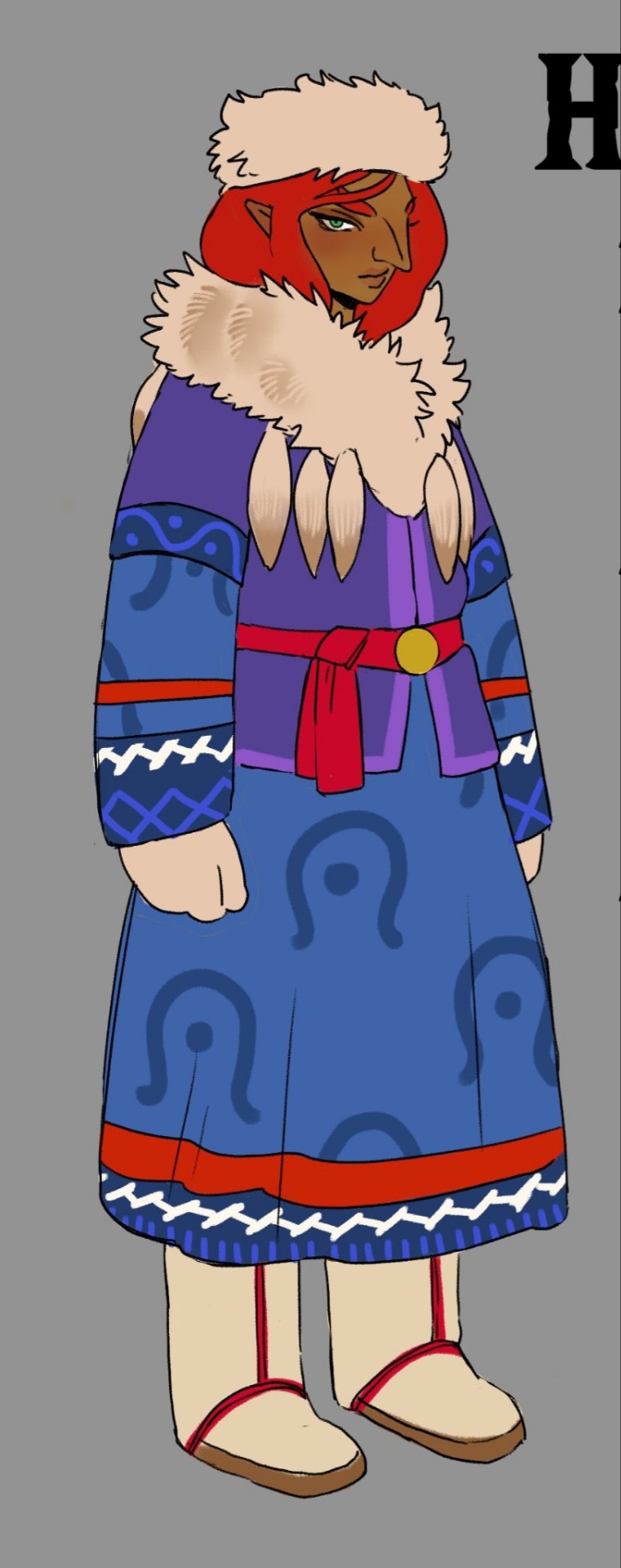
(Not my art, but I love how it looks. However if the original artist wishes for me to take it down, I will do so.)
Over the millennia of living in the Highlands, the Eaylian Gerudo's aquiline noses have become more upturned like the Hebrans so as to heat the air that they breathe in. This makes them more readily adapted to their environment than their desert sisters.
—
They have become something of a farming village that cultivates hearty foods. Particularly Tabantha Wheat, Tundra Potatoes (Spicy), Hearty Radishes, Bloodberry Grapes (Chilly & Hydrating), & Endura Carrots.
A few Sheikah men also brought over Snowdrift Buckwheat (Snowdrift), Mountain Furberries (Freezeproof; Kiwis),
They also raise Highland Yaks, or Bōsa, for Bōmïchaa (Yak Milk) & use it to make Bōchurkha (Ealiyan Cheese) & Bōsudrï (Yak Butter).
Not to mention, Bighorn Sheep that some shepherds brought with them from the desert, or Ranqarn Ghanam. They tend to use a lot of Bōsoof, yak wool, & Ghansoof, sheep wool (specifically Merino wool), in their clothes which retain heat much better. They also produce milk, Ghamïchaa, which the Ealiyans use to make butter & cheese as well, Ghasudrï & Ghachurkha.
Because of this, whenever a recipe requires dairy, they tend to use local Bōsa or Ghanam products.
Many have become fierce hunters & have traded their claymores for longbows & arrows to better hunt for Tabantha Meese. They still do quite well with spears though. The guards also use Moonlight Scimitars, Mah'let Shim'tarren, & Shields, Ïkemen, much more often than Desert Gerudo.
And due to the Highland Gerudo having access to higher quality metals than the desert, they use the traditional Gerudo method of pattern welding known as Dawallaham with the Dawasaaq steel of the Highlands to make even better, more powerful & durable weapons. Thus, greatly improving on the Moonlight Scimitar's design. Dawasaaq steel being the Hyrule equivalent to Damascus steel.
And their hunting companions are typically the Fïwa'gàtï or Snow Cats. Which are tiny, snow white or light gray felines with darker gray spots resembling the pelt of a miniature clouded leopard, but with thicker, more fluffy fur much like a Maine Coon or Ragdoll, larger, broader ears, & long claws.
These cats are the cousins to the Gel'gàtï, Sand Cats, of the Gerudo Desert. Instead of white or gray, Gel'gàtï are light yellow with white underbellies, brownish or blackish spots, & short hair. Though, they keep the large, broad ears & long claws.
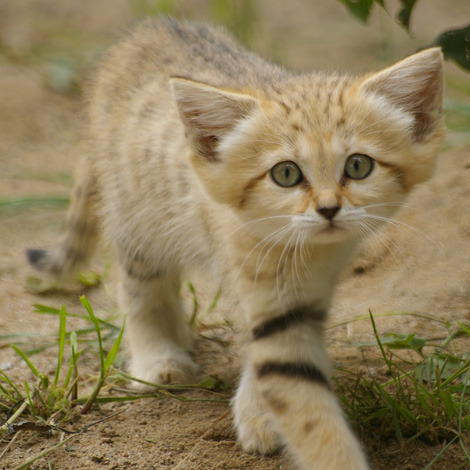
(Just with Cheetah spots instead of stripes.)
Both species are known for their stealth, hunting, & tracking abilities as well as for being terrifyingly fast & excellent, very affectionate companions. The Gàtï are small, even compared to most house cats, but extremely vicious. They are basically domesticated attack honeybadgers. They will fight the gods given a good enough reason & will not even hesitate.
Sassy little stinkers, but, again, extremely affectionate. The fact that they are positively miniscule when perched on the shoulders of such giantesses as the Gerudo, just makes them all the better. Both species tends to burrow as wild ones build their own dens.
The Fïwa'gàtï came to be when the 1st Gerudo broke off from the main Gerudo society to live in the Gerudo Highlands around 30,000 years ago by the time of BotW/TotK & brought their little hunting buddies with them.
(It's very possible that the Gàtï way have a common ancestor in the Remlit.)
Anyway, the Ealiyans also have immediate access to Cool Safflina, Chillshrooms, Ice Fruit, Wildberries, Nayru Pears (Freezeproof), Frostbite Mint (Biting), Freezia Gardenia (Freezeproof), Stamstalk Stevia (Energizing), Frostbane Blossom bushes (Spicy), Gleam Ginger (Sunny), Ice Roses (Freezeproof & Amorous; extremely rare), & even a small amount of Vital Sage (Enduring). Vital Sage being great for flavoring meat, which the Highland residents tend to eat a lot of.
The caves around the Highlands also grow quite a lot of Cavern Sorrel (Dark/Warding) which is good for making soups & stews.
As a matter of fact, Ealiyans are quite adept mushroomers as the caves around the Gerudo Highlands tend to be very good for cultivating a variety of mushrooms. They are also the perfect places to brew alcohol, some of them even being set aside specifically for just such a purpose & referred to as Brewing Caves.
Not to mention the Snowcoat Foxes, Cold-Footed Wolves, Tabantha Meese, Grizzlemaw Bears, & Snow Pidgeons that live around there, thus they have quite a lot of Prime & Gourmet Meat & decent quality Bird Meat in their diets. Plus, the furs of these animals make for such excellent, warm clothes, perfect for guarding against the frigid air of the Highlands.
They also have the benefit of relatively easy access to 2 Satori Trees, 1 in the Gerudo Canyon & the other on Satori Mountain, which gives them a good amount of Satori Cherries (Hasty) & Satora Blossoms (Hasty & Amorous) during spring.
Ealiyan grocers tend to hire workers to go hike to Gerudo Canyon to gather things such as Sunshrooms, Warm Safflina, & even Fire Fruit & Shock Fruit, & the village itself has a strong trade alliance with Gerudo Town where they trade them a large variety of booze, Cool Safflinas, many different types of mushrooms (especially Chillshrooms), Bōsa (Highland Yak) products, textiles, dyes, & other things in return for Warm & Electric Safflinas, Voltfruit, Moonblooming Arguses (Dusky/Dawning; flowers that grow from Voltfruit Cacti), Shock Fruit, Oasis Honey (Recovery), Sàbaar Fruit (Recovery), Hydromelons, Zapshrooms, ect. Though, only after TotK Ganondorf was sealed away & they stopped performing Feminization of the Enemy upon foreign men. Not to mention abolishing slavery & freeing the Vo'màzren (male concubines) that they kept captive for the purposes of breeding.
Of course, that doesn't mean that all the men left, a handful remained due to their own issues. Either as horndogs themselves or just with their own senses of self-worth telling them that they don't deserve better lives. As such, the sex industry still lives on, but at least now the men aren't slaves & are actually paid. All other Surré Qasrehsen (Pleasure Palaces) have been dismantled, leaving only the one in modern Kàra Kàra Bàzaar, which is swiftly growing into Kàra Bàzétto. Bàzétto being the Gerudàn term for Market Town or Martown.
This is due to a recent change in Desert Gerudo policy. While men are still not permitted inside Gerudo Town proper due to it being classified as a vaidina or sexually segregated town where only women are allowed entrance; however, men are more than allowed to stay in Kàra, which has led to the husbands & fathers of many Gerudo to take up residence there.
Several even taking up positions as venders, store owners, & even guards. This, along with an effort to produce their own food in the form of Hydromelons, Shock Fruit, Fire Fruit, Dazzlefruit, Voltfruit, Safflinas, Zapshrooms, Wildberries, & Spicy Peppers by one Dālia (now an adult), who along with her Gopongan husband, has discovered new agricultural practices, including the introduction of hydroponic gardening in Gerudo Town itself & the strawgrid planting method in Kàra. Which has allowed the Desert Gerudo to begin producing their own crops. This has resulted in rapid growth for them as a culture.
The things that they are now able to grow there that they hadn't before, includes Tabantha Wheat, Hylian Tomatoes, Stambulbs, Sun & Fortified Pumpkins, Swift & Endura Carrots, & Hearty & Big Hearty Radishes.
As well as the things that I've made up for the purposes of fleshing out the desert, Shadow Yams (Dark/Warding; grows in shade), Càrïtàn Beans (Toxic; for bathing products & caring for Everlost Silkworms, not for eating), Zonai Cocoagranos (Spicy & Amorous), Zonai Cofégranos (Energizing), Zonai Corn (Mighty), Desert Queen (Chilly; Mangosteen), Faron Pineapples (Spicy & Hydrating), Pyre Beans (Scorching), Brushberries (Sanddrift & Hydrating; evolved from Wildberries), Amorous Figs (Amorous), & Bloodberry Grapes (Chilly & Hydrating) that are, likewise, able to survive easily in the desert. Then, there are the 4 Cactus plants I made up, such as Prickly Peaches (Chilly & Hydrating), Desert Aloe (Chilly & Recovery), Boltshield Houseleeks (Lightningproof), & Sàbaar Fruit (Recovery; Agave Fruit). As well as a few flowers, herbs, & spices, such as Rainfall Pansy (Hydrating), Paradise Bird flowers (Aerodynamic), Wave Saffron (Gills), Hoy Mustard Greens & Seeds (Spicy), Gleam Ginger (Sunny), & Sand Cistanche (Vitality & Amorous). As well as Cavern Sorrel (Dark/Warding), though they only grow in caves.
There's also Arrōyorice (Sanddrift) which is a type of Farrow, but this is actually Tabantha Wheat that has fully adapted to the desert. It's a very new discovery, so it's still being learned.
Not to mention Water Cabbages (Gills & Hydrating), Bayou Bellpeppers, & Freshwater Cucumbers (Rapid & Hydrating) that can only be grown in water. So, they are grown in the oasis itself.
Which the Ealiyans will also gain access to via trade.
---
Anyway, Sunshrooms are always appreciated as they are one of the only mushrooms that Eaylians can't grow in their mushroom caves.
Due to Stamstalk Stevia (Energizing) growing in the Highlands, Ealiyans simply don't use Cane Sugar in their cooking, instead replacing it with Stevia.
Highland Gerudo also don't tend to use Cool Safflina or Chillshrooms in their cooking as the effects are pretty counterproductive to living on a block of ice 24/7 &, in fact, tend to make you freeze quicker. Instead, they tend to sell them to Gerudo Town, who has much more use for it, or make the Safflina into alcohol & then sell it to Gerudo Town.
—
Living in a colder climate, Ealiyan Gerudo don't focus as much on jewelry as their desert sisters. They do wear some, but it usually has a simple elegance to it & is functional, such as a simple pair of ruby earrings to help keep the cold away.
Some also enjoy light, if modest, makeup or even in some cases, none at all. Usually just a touch of brown kohl to give their eyes a nice smoky look. The same shade that Riju features.
And while they don't wear much, if any, makeup, on special occasions it is common practice to wear a type of rogue made from dried Wildberries. The color is considered to be sultry & intoxicating, while still managing to be very refined & tasteful.
What isn't diminished, however, is their love for textiles & vibrant colors, which is every bit as present in the mountains as it is in the deserts.
As a result, despite not having many in the Highlands, they have a great love for bright, exotic flowers, which they use to make lovely dyes that they ship to other villages.
Along with this, much like their desert sisters, a lot of Ealiyan Gerudo have a very well-developed instinct for brewing & mixology. Thus, they have an appreciation for herbs as well.
A Highland Gerudo actually invented the technique used to make daiquiris & other frozen cocktails by using Ice Fruit.
—
Some of the dyes they are well-known for are Wildberry Burgundy from Wildberries, Frostbite Mint-Blue from Frostbite Mint, Cobalt from Cool Safflinas, Freezia Sky from Freezia Gardenias, Blossom Red from Frostbane Blossoms, Truffle Brown from Hearty Truffles, & Pear Green from Nayru Pears.
These are all made from the local flora & are common colors to find people wearing in Ealiyah.
Pear Green is actually a favored shade for Desert Gerudo lipstick & the Cobalt for kohl. Cobalt, on the other hand, is the favored lipstick shade of Riju.
The Highland residents also regularly trade with Lurelin, Ordon, & Gerudo Town for other flowers & fruit to make dyes with. Such as Electric Safflina to make Electric Yellow, Warm Safflina to make Brick Red, Lovely Roses to make Rose Magenta, Sweetheart Pink from Sweetheart Orchids, Voltfruit Fuschia from the hulls of Voltfruit, Silent Princesses to make Maiden White, Thunder Chartreuse from Thunder Buttons, Light Indigo from Swiftsail Lavender, Hyrule Herbs to make Herb Green, Hydromelon Orange, Sunrise Orange & Pink from Valiant Gladiolus, the hulls of Desert Queens to make Royal Purple, Violet from Swift Violets, Amethyst from Armoranth, Sunshine Yellow, Sunset Orange, & Gold from Sundelions, & more.
Not to mention Sunshroom Orange from Sunshrooms. Also blending Truffle Brown & Brick Red to make that lovely Smokey Brown that Riju uses, which is also the preferred kohl shade in Ealiyah.
(If you'd like to better understand the flowers, herbs, fruits, vegetables, ect. that I just listed that don't appear in the games, go here.)
—
It's still tradition for Ealiyah Gerudo to leave the village to find a husband once they come of age (though, it's possible for them to have already found one in the form of another Gerudo's stepson or stepbrother or even half-brother & in such cases, they are allowed time to figure out if the relationship will work out), the only difference here being that they're not expected to leave their husbands behind when they & their daughters are expected to return to Ealiyah. In fact, it's encouraged that vaien bring their husbands & their stepchildren (in the case of a widower) along if they so wish.
Any stepchildren that come to live in Ealiyah are treated no different than the Highland Gerudo vaivïn born there & are even allowed to train in the ways of the Gerudo. Regardless of sex.
Ealiyah, despite its location, is a very warm & loving community full of happy families & stalwart, hearty, hardworking personalities. Part of the reason for this being that one of the ideas that Ealiyah was founded on was the idea of keeping families together rather than separating them as has been tradition for the Desert Gerudo for generations.
—
Whereas the Gerudo of Gerudo Desert worship the Goddess of the Sand (al'Geru'è Vallah, referred to by the proper title of Vah Gela when her name is used) & her demi-goddess daughters, the 7 Heroines (al'Zaf Vahshô'làran), & it's debated as to whether there even was an 8th at all (some even regarding the speculation of there actually being one as sacrilegious), Ealiyans worship the 7 as well as the 8th definitively (the 8th & the 1st above all the others), who was actually a lesser Hylian oni god of heroism, a Kishin or as the Highland Gerudo referred to him, a Voh'lawàr (look up the Buddhist Pāla), who'd once worked as a retainer for the late Fierce Deity. He was on a pilgrimage to find his new life's purpose after his master had willingly given up his immortality in order to act as Hyrule's Legendary Hero in a never-ending cycle of reincarnation with his wife, twin sister, & their sworn enemy. On this pilgrimage, he made it a habit to aid those in need.
As a result, while traveling, he came across the Gerudo who were being besieged by some great strife & went out of his way to lend his aid to the 7 Heroines. While the Heroines had been doing extremely well on their own, it had been his wisdom & military expertise from having spent years at the Fierce Deity's side that ultimately tipped the scales in the Heroines' favor.
This resulted in the Gerudo tribes being saved, but he was still forbidden from entering Gerudo Town due to being a man. The Voh'lawàr himself was understanding of their traditions, if a bit stung by their rejection.
This all takes place around 10-20,300 years after Ocarina of Time as the "no men" rule became an official law around when the next Centennial King, after the 2nd Ganondorf (FSA), was born. At that point, they were only just beginning to transition away from a life of thievery & banditry. (Keep in mind that it was specifically said that there had been no male Gerudo leaders in centuries, not that there were no male Gerudo at all.)
It was soon after this that the Gerudo Tokens turned from a simple membership card into a sort of visitor's pass for certain men who had proven themselves trustworthy.
(I hc that Wild Link is given one after BotW even though that didn't canonically happen.)
Anyway, it's because of this that the 7, or at least the 6 younger Heroines, are sometimes (often) regarded by Ealiyans with a certain degree of harshness & even hurt & bitterness, as a result of what is perceived as betrayal & ingratitude.
The 8th is referred to by the Ealiyans as the Forsaken Hero (al'Mà'trook Voh'lawàr) & regarded as the God of Unsung Heroes (Nàreq'lawàren'è al'Vollah). So, to remedy this fact, they sing his praises & praise other such unsung heroes. It's due to this fact that Ealiyans have a Library of Myth of sorts filled with an abundance of extremely old legends depicting heroes that have been largely forgotten by other societies. Including decently detailed stories of the previous Links (though, not their names; that seems to have almost been entirely scrubbed from history, which Ealiyans see as suspicious) & the Legend of the Birth of Hyrule via the 3 Golden Goddesses, who had been largely forgotten since before the arrival of the Zonai. And even a very vague folktale of the war between Hylia & the Bringer of Demise. Though, only Hylia's name is remembered.
They also have a small Shrine of the Unsung Hero (al'Nàreq'lawàren Devïdán'è) in town that is treated similarly to the Tomb of the Unknown Soldier in America. It always has a guard standing there guarding it with an extremely strict patrol protocol. And when the guard changes, they go through a routine that is very different from the Unknown Soldier, but is no less important. These guards are a known part of the Shrine Guard (Devïdàn Mèdja or Dán'ja for short). Every Shrine Guard is strictly a volunteer & to be accepted for the position of Shrine Guard for the Unsung is considered one of, if not the, highest honors.
So admired is the respect given to such unsung individuals that Hyrule had a shrine of their own built in Hyrule Castle Town before the Calamity destroyed it 100 years ago. It's architecture is directly inspired by that of the Shrine of the Unsung Hero, though Hyrule's is mostly for honoring soldiers who've died in battle. It is protected & treated with similar diligence, honor, & reverence as the Shrine of the Unsung, just in a different way.
As a result, Ealiyah tends to produce numerous Àliqologists, which are like historians, mythologists, anthropologists, archeologists, record keepers, & librarians combined.
(Which tends to be why Ealiyah gets a decent number of researchers visiting.)
And if anyone were to notice the pattern of the Demise-born Centennial Kings, it'd be an Ealiyan Àliqologist.
In fact, it was an Àliqologist who made the discovery that the Gerudo kings most likely to become tyrants have always been born under the sign of Khinzïr, the Boar.
Anyway, it's because of this that Ealiyans have grown to become natural storytellers.
In fact, Ealiyah has a decently-sized town square where there is a large stone fire pit, inside of which is a bonfire that is lit every night. This pit is surrounded by a stone amphitheater that's recessed into the ground. Beyond that, along the edges of the actual square are little stalls that sell goods. During festivals, they sell foods & snacks.
And bi-monthly, the residents, especially children, come out to settle into the amphitheater with blankets & hot drinks to listen to the elders tell fables, legends, myths, parables; any sort of story you can think of. Whether actual history or a work of creative fiction. So long as it's acknowledged as such at the beginning, you can tell whatever story you wish. Acting & the theater having even become a large part of their culture.
They are also known to weave splendid, vividly-colored tapestries that depict these same stories, which are regularly used by storytellers as visual aides. Though, those are more for home use.
Theater costumes are also a decent industry there.
At the same time, this also tends to produce elderly folks who are... a bit long-winded & chatty. Even a bit gossipy, but normally not in the mean way. The kind of elders that always have a story or lesson up their sleeves. They will lore-dump on you real quick!
—
Despite their patron being the Forsaken Hero, they are also known to pay special respect to Vah Kàvtrïna, the Goddess of Love, Passion, Pudicity, & Family, as well as the Home. As well as the Hebran deity, Hebrogar, who also has many domains of his own, some of which being family & fatherhood.
Which, as discussed before, are all very central & important concepts to the Highland Gerudo as a culture.
Of course, the Highland Gerudo have also taken on several aspects of Hebran theology & even a handful of Ordonian ones as a result.
In particular, the idea of the gods preferring self-reliance in their followers. Meaning that the gods are more likely to help those who help themselves, tending to see incessant praying without action as whiny. This being a particularly Hebran belief that meshed quite well with the Gerudo's own self-reliant tendencies.
---
Ealiyah's interior style tends to be very Bohemian-Tibetan-Russian, being very colorful & eclectic. They are also known for their mosaicry, weaving, knitting, & crocheting.
They also tend to have a liking for organized clutter.
---
It's said that the original founders of Ealiyah were Gerudo who were disgusted with the injustice visited upon the Forsaken Hero & thus broke away from the Gerudo Culture in order to found a settlement where he would be properly exalted. At least partially.
Anyway, while the Desert Gerudo simply assume that the 8th was a woman just like the other 7, the Highlanders know the truth, but don't go out of their ways to correct the mistake.
Now, admittedly, part of the reason why this belief became as such was due to it simply being the style. Much like it was the style in ancient Egypt to portray Pharaohs with beards even if the Pharaoh happened to be a woman.
The Desert Gerudo simply portray all heroic warriors with breasts. (This wasn't the case before the female-only curse, but thousands of years of only female heroes tends to cause certain habits.) However, the Ealiyans realized that this leant itself to inaccuracy & began to change this trend in the Highlands. While tradition is important, if it is a detriment to a society, then those traditions should be adjusted.
In my hc, the 7 Heroines are the daughters of Vah Gela, the Goddess of Sand (al'Geru'è Vallah), who birthed them from her many mortal concubini (male concubines) or Vo'màzren.
(However, the facts surrounding these individuals as actual deities have largely faded from desert theology.)
This reflects how IRL sultans would have multiple wives, concubines, or a harem. Gerudo women, especially back in their thieving era, had multiple slave men who they'd kidnapped & forced into sex in order to have as many daughters as possible. It was believed that the stronger the man, the stronger the daughters.
As such, the men of other cultures were both coveted, as well as seen as less than to a degree. This is another reason for why the ancestors of the Ealiyan Gerudo broke off from the Desert Gerudo.
Thankfully, this practice has long since been abolished, but it remains a black spot upon the Gerudos' history.
As mentioned above, the Forsaken Hero was just a lesser Hylian god & a retainer of the Fierce Deity, who wished to help & in the end, he & the eldest Heroine ran away together (along with their followers) to marry & help found Ealiyah. As such, Ealiyah's Chief is always the vai descendant of the eldest demi-goddess Heroine & the Forsaken Hero. (Though, the fact that they have the blood of deities is more so a rumor by now.)
Examining the timeline, if we follow my hc, we know that this takes place after the Gerudo-Hylian War that resulted in the Gerudo's women-only curse (al'Sûl'si Nàshàlay'è, the Curse of Castration) that took the lives of all their voen, which itself takes place not long after the Bringer of Demise was finally defeated in Skyward Sword. However, it also has to have taken place after at least the 1st Ganondorf made his attempt on Hyrule.
It was between a hundred or so years after the 1st Ganon's death/sealing/victory & the 4th Ganon's sealing, which is a 30,000 year range.
—
Aside from leaving to exalt the Forsaken Hero & to get away from a culture that exploited men, there were many who also left due to having found the social expectations of the Gerudo traditions stifling. Not necessarily the need to find a man, as such was essential to the continued existence of their people & culture, thus making it a tradition founded on necessity; but more so the strictness of needing to break up their families to keep their daughters separate from men, including their own fathers.
Many felt it unnecessarily cruel & a holdover from a misandristic bias & a rather extreme attempt at overcorrecting after 4 of the Centennial Kings (Ganon from OoT, Ganon from FSA, Ganon from HW, & Ganon from TotK) grew to be psychotic warlords hellbent on "ruling" Hyrule. (Read as destroying then salting the earth so that nothing can grow there again.)
Which inevitably ended in renewed prejudices towards the Gerudo & left the desert amazons to pick up the pieces & deal with the consequences themselves. This nurtures a bit of internalized, generational resentment towards males of their own kind which, unfortunately, can somethings spill over onto the men of other races as well. (They are most definitely getting better, but they still have a ways to go.)
As a result of this bias, a lot of the Mafzīnàla Voe'attàren (Centennial Kings) are often either culled as soon as they're born or grow up hermits & outlaws of the Desert Gerudo. This is a secret that not many Gerudo below a certain rank even know. The few who do tend to be very high ranked & keep the secret with their lives. Buliara specifically has kept it a secret from Riju to give the girl plausible deniability. It is the secret that the Gerudo are most ashamed of.
Luckily, Gerudo mothers who do not wish for their sons' lives to be cut short, will often travel to Ealiyah Town to take refuge there among those who've allowed themselves to move on from that old hate & hurt. There are still whispers & some wary looks, but no outright hate.
Others will instead choose to move to other areas or, in desperate situations, will even leave their sons with their husbands before returning to Gerudo Town to make a show of having lost their child. Either through miscarriage or stillbirth.
As a result, many Centennial Kings tend to live much more humble lifestyles than those of the distant past. Some are even lucky enough to be born Ealiyan. On extremely rare occasions, they are even born to the Ealiyan Chieftain.
Unfortunately, politics still play a part, so it isn't uncommon for the next Chieftain & a Centennial King (so long as they themselves aren't also related to the Chieftain) living in Ealiyah to marry. Fortunately, most have resulted in long & at least pleasant marriages rather than misery.
It's only recently that the Desert Gerudo have managed to pinpoint that the tyrant is always born on the 21st of February, under the Sign of the Boar, the Khinzïr constellation. Thus, those who are aware of the trend have begun to refer to them as the Vōton al'Khinzïr'è (Sons of the Boar) or the Mafzī'àlfankha Sûlfetànïren (Myriennial Tyrants).
(I sort of hc that TotK Ganondorf was the son of an Ealiyan Gerudo & her Ovelian Hebran husband. TotK Kōme & Kotake are worshipers of the Bringer of Demise who sought him out specifically because they are some of the few out there who know in intricate detail when exactly the bearer of Demise's hatred would be born. So, they kidnapped him as a baby & killed his parents. He doesn't know, if he did, he would've killed them himself. In fact, all Ganondorfs are kidnapped by Kōme & Kotake. Thus, making him an unknowingly tragic figure.)
---
There's more, but I'm still figuring it all out.
LoZ Cultural Masterlist
#loz#botw#totk#legend of zelda#breath of the wild#tears of the kingdom#loz wild series#gerudo#gerudo culture#gerudo highlands#highland gerudo#ealiya town
13 notes
·
View notes
Text
Some times I wonder what the traditional dress of my area would be.
The sad thing about being a historically poor area in a powerful country is you sort of get lumped in with that country but actually you've got fuck all to do with it. So get shit for being English and then I get shit in English for being Northern.
And yeah, you're English cause you're not Scottish or Welsh or Irish, but what does that mean?
So I wonder what was Here before we were English, which is a time so long ago there isn't a cultural memory of it. The land isn't good for farming so no conquerors really gave a shit, but there was nothing powerful here to fight for or against so you just pay your taxes to whichever shithead has been plonked here to watch you and keep farming your sheep. Sheep turns to coal and factories, and the country is abandoned for towns. Then that's all gone and suddenly there's nothing here but that's your fault for some reason. You never had a say in much, and even today politicians sort of look at you around election time and say "oh you poor deers someone should help you! We could do that!" And then toss you out the moment they don't need you. Worse if you're a safe seat, they just don't look at you at all. They bus someone in from somewhere else to hold the seat while they have their eyes on the ladder they're set to climb.
And the pretty places get bought up by rich southerners as second homes, and your poor places get bought up by the same people and rented back to you. But that's not new, it's always been about extracting wealth, and there isn't much wealth here to extract.
So your history is ??? And your traditional dress is ??? And your areas traditions are ??? Cause none of it was ever worth holding on to. And the last indication of your culture is your regional accent: but you better get rid of that if you actually want to do anything cause that's not a good thing.
There are Scottish Earls who have had more say in England than people like me, but they get a pass and I don't. :|
Clogs and flat caps and dirt and sheep and pies and haha you say words funny and low intelligence and unemployment. My English legacy.
6 notes
·
View notes
Note
hai !! do u have any thoughts / headcanons / etc about vaurien scapegrace you could share🕴i hardly ever see content for them and i like your opinions in general so 😁👍
Hey! Thank you for the ask first of all :) also sorry if these are a bit random and disjointed
One of those fans of true crime
All the serial killer mugs, t-shirts with Ted Bundy quotes on them, and aprons with dahmer on them
Adores Netflix true crime stuff and listens to podcasts
He calls it "gathering influences"
Hes Welsh and has a super strong accent
He can speak Welsh quite well but cant speak any foreign languages
He is an animal person, in particular he likes farm animals like sheep or goats
Since its canon he was involved in the war at some point, I think he deserted
Not because he didnt like being surrounded by death, but because he didnt like endangering himself
He enlisted very young and the army was not what he expected or wanted
Hes was very self serving back then and the whole "dying for your cause and fellow soldiers" really didnt appeal to him
He's had a fascination with the human body and gore his entire life
He grew up on a farm slaughtered animals so blood and death has never bothered him
He may not be conventionally smart, but he knows a lot about biology
Where major blood vessels are or the weak points of the body are just general knowledge to him
He likes classic horror movies
Most of the appeal comes from the special effects and fake gore
Honestly hes been a bit of a disaster for most of his adult life
The whole murder thing has basically been the only consistent thing
#half of these were written at like 2am#i actually really enjoyed writing these#scapegrace is honestly so interesting#and im surprised i havent put that much thought into him#skulduggery pleasant#vaurien scapegrace
20 notes
·
View notes
Text
The inflammatory tags on that blog post about the auction prices on working Kelpies is funny considering it's difficult to find traditional driving stock-dogs in North America.

When I was looking into adopting a Kelpie or a Heeler as a thru-hiking companion, the farmers just straight up told me the driving lines are being phased out in favour of chute-dogs because trucking cattle is easier (and cheaper) than driving livestock over long distances on horseback or with quads. In large part because the lands are fragmented and one requires permissions to cross locked off parcels of land. Especially with absentee landlords sitting in big cities (eg. New York City, Toronto) and notorious for not answering emails or phone calls. And becoming more difficult every year.
Trying to tie farm-dogs into labour politics of farmhands is nonsensical here.
If you really want to critique agricultural animals being commodified by capitalism, could at least brush up a bit on David Nibert or read any of the eco-Marxist, green anarchist and social ecologist critiques of consumerist animal liberation groups being incomplete in their analyses of animal exploitations.
Better yet bring up how the enclosure of the commons and industrialization of livestock created the modern Border Collie, at the detriment of tenant farmers (eg. the crofters) and the British landrace collies (eg. Welsh collie, Old-Time Scotch Collie, Patagonian Sheepdog) and abroad (in the case of the Swedish Vallhunds and other herding breeds after WW2); or the development of gundogs, leisure class and the landed gentry.
Or even touch on settler-colonialism, displacements of Indigenous people (and Indigenous dogs), loss of knowledge in land stewardships, as well as the effects of cattle and sheep on prairie ecosystems. Or even just the landlordism aspect of big agriculture or the petite bourgeois politics of the small landowners.
Sorry, even working dogs are losing their jobs. There are just so much better anti-capitalist critiques of animal exploitation, landownership, industrial agriculture and privatization of farming operations.
2 notes
·
View notes
Text
Welsh!Arthur au where his grandparents just stayed in Wales after the war and he ended up growing up on some sheep farm out in the countryside instead of rural Idaho (gotta keep to the farm boy roots after all).
Still insufferable, just in a different flavor.
2 notes
·
View notes
Note
Lately I've been reading "Drawdown", by Paul Hawken et al, a comprehensive set of strategies for tackling the climate crisis. Your Cambrian Wildwoods post reminded me of one of the solutions - Silvopasture, from the Latin for 'Forest Grazing'.
Essentially it means proposing to farmers that a portion of land be forested and that their animals freely graze there. It can be extremely flexible - planting trees in existing pasture, thinning down woodland to allow for forage growth, using trees as natural fencing, and more.
It's got good potential for carbon capture, and also for saving farmers money in feed and fertiliser, creating better conditions for livestock by keeping them in the shade, and potentially providing secondary income sources in fruit, nuts, etc.
What do you think of it as a potential avenue for Welsh farming? The focus in "Drawdown" is on cattle farming, but I don't see any reason not to trial it with sheep - especially since it could be spun as a hybrid of both aspects of traditional culture...
("Drawdown" also emphasises peer-to-peer uptake through word-of-mouth, rather than being pushed by outsiders.)
Oh, yes - it's basically what they did at Pontbren. That was a farmer-led initiative - one of the big expenses with sheep farming is having to bring them into barns over the winter and supply all feed, but traditionally they'd have stayed out all year. So these farmers got together and went, "How do we ethically and sustainably reduce this expense?"
What they realised is that they were paying for (a) the government-enforced decision post-WW2 to swap to high-yield breeds of sheep that weren't suited to the Welsh climate and topography (i.e. wet as fuck and mostly vertical), and (b) the decline of traditional hedgerow management and shelterbelts. And so the dream was born.
They contacted the Woodland Trust purely to act in an advisory capacity - they wanted to know which trees would be best, and where. They could take much land out of production, but the beauty of hedgerows and shelterbelts is that they're linear features that replace your fences. That was how environmentalists got on board - we were invited, and we remembered that. We were therefore allowed to do a couple of experiments as it progressed, such as testing the infiltration rates of rain into groundwater rather than run-off and comparing it between hedgerow fields and fence fields. Meanwhile, the farmers replaced their stock with native breeds - I believe mostly Welsh Mountain Sheep, which look amazing:
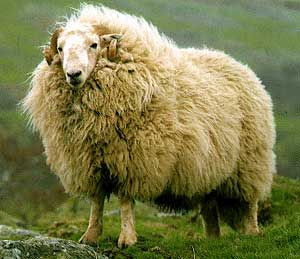
Ain't no rain getting in THAT.
Anyway, a few strategically placed shelterbelts and hedgerows later and:
The sheep can now safely stay out all year round, excepting storms
The sheep are actually healthier and have higher welfare standards
Floods have reduced thanks to higher infiltration rates
Soil erosion is reduced so the fields and river are healthier
The farmers have saved money
The farmers are now making extra money, because they started a tree nursery and sell trees as a side project
You can read multiple publications on it here
So yes! Silvipasture is actually a huge tool for the future that we need to be embracing, as is agroforestry for arable farming, and the frustrating/hopeful part of it is, these are tools we used to use. This isn't new knowledge - it's forgotten knowledge that we need to reclaim. But even aside from the immediate benefits, it also has massive implications for resilience in a world with a warming climate, and we need to do it faster.
591 notes
·
View notes
Text
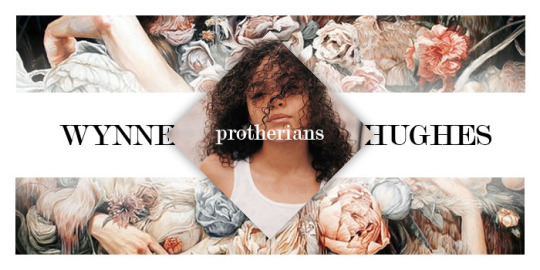
A quick guide about Protherians & deals with demons.
Head's up! This post talks about human and animal sacrifice, and though I won't get into minute detail, it will still be present throughout as its at the core of Protherian belief.
TLDR: Welsh farmer and patriarch Corwyn Prothero made a deal with a greater demon, some three centuries ago. In return for reverence, sacrifice and devotion, he and his ilk would receive good crops, good fortune, privacy and stability. Ever since, traditions and rituals have sprung up to make the downright simple truth more digestible: from moon-cycle based sacrifices to equinox-celebrations. Early in the 20th century, the then-patriarch attempted to relocate his group to the US in an attempt to shake their demon and never ending debt. It, naturally, didn't work and did disgruntle said demon quite a fair bit. Ever since seeing its wrath, the commune has lived in greater fear of it.
Click HERE for a visualisation.
The Protherians (named after their once-founder, whose painted image still hangs in mess hall) can currently be found in the area of Moosehead lake, where a large estate is the home of a small, self sufficient community. Contact with the outside world is limited and extended to a fair few, who do business with nearby towns.
Over the centuries, Protherian scripture has become the base of the cult's beliefs. There are biblical themes and stories there, though they do not believe in God. Stories like that of Abraham and Isaac, as well as Noah, however, are often referenced. The texts are seen as absolute truth.
When speaking of the demon with whom Corwyn Prothero made a deal all those centuries ago, they prefer to use the word gythraul or simply It. Most people have not seen it (and those who claim to have might be lying), though there are drawings. Yes, the demon has goat legs. Yes, It might have chosen to appear that way to scare the bejesus out of previously god-fearing people.
There is a soft hierarchy within the cult, with elders having the highest position. The patriarch (often a direct descendant of Prothero) stands at the top of society. In two instances, this role has been filled by a woman — but the commune is quite a patriarchal mini-society.
Mentors are highly revered. Most other members are just that, and tend mostly to the farming, livestock and other tasks that keep society turning. There are commune-wide referendums, though they are not always heeded by those in charge.
Keeping their followers in check with fear is an effective method, though there are other means as well. Disobedience and cynicism are not met with kindness. Desertion means being disowned. Generally speaking, these measures are not taken often due to a lack of need.
A lot of the fabricated beliefs are based in nature. With their lives still so tied to the change of the seasons as well as the whims of the weather, perhaps this is only logical. They celebrate each equinox with large feasts, bonfires and dance.
While Protherians are superstitious in nature, they don't subscribe to most Anglo-Saxon superstitions and have their own ways. A bone in your pocket, an innocent creature bled out, a chicken heart on your doorstep, a smear of blood on each cheek. To be connected with death is to respect life.
They are very respectful of all living things, but also deeply revere the cycle of life and death. It's why sacrifice is such a fundamental and core part of their community.
Animal sacrifice is deeply normalised and is part of most celebrations and rituals. In the centre of the estate stands an altar, where fruits, flowers and at times, dead animals are placed to appease gythraul. Every blue moon, the best sheep of the flock is bled out — its coat dotted with braided flowers and scented with infused oils.
Every fourth blue moon, it is a young adolescent in stead. This knowledge is shared with the intended sacrifice after the end of a previous cycle and the rest of their life is lived in preparation of the best thing they could possibly do for their community. Human sacrifices are sanctified when alive as well as dead, given the best portions and nicest room.
The person receives lamb-rib necklaces, rabbit phalanges to keep under their pillow and dried flowers to hang in their room. To have someone among you destined for death is in and of itself something honourable and holy.
It is said the person's destiny is solidified due to their date of birth. The one born closest to the latest human sacrifice shall be destined to fulfil that role one day. Such was the case for Wynne.
(This is a lie. At the end of the day, there's nothing special about Wynne. It exists make it so that the elders and patriarch can't be blamed for choosing someone to die: leaving it up to fate is more easy to accept, for most.)
Modernity is largely rejected, though there is electricity and radio. There even is a router somewhere on the estate, as a few mobile phones — but this is not at all advertised and limited to elders alone.
Clothes are mostly handmade and, thus, rather traditional. Plaids, cotton, wool. Simplicity.
They aren't necessarily traditional in all other ways, and do have a tendency towards 'hedonism'. Corwyn Prothero rejected Christianity, after all, and his community soon started to live in what they had once considered sin.
Children are homeschooled and do learn a fair bit of the outside-world curriculum, though are always taught to take it with a grain of salt. Mentors teach them to look down on modern society and their brutish, self centred ways. They have lost their way.
The threat of gythraul is very real, no matter how Wynne doubts it at times. When the community moved across-seas in an attempt to shake It, they met its wrath as it claimed young souls, leaving the commune child-less in 1934.
Wynne fears their abandonment has caused another event of sorts, though they cannot bring themself to do the research needed to find out. Any thought of what they might have set in motion leaves them frozen and shut off — so it might be a while until they find out.
Allow me, then, to lift the veil. The birth order makes no difference. Wynne was only ever special because they were told as much, because they were adorned with flower-bone wreaths. All that gythraul requires is a young life ended before its time. When the elders found Wynne's bedroom empty and their coffers depleted, they held their head in their hands for a moment.
That night, it was Wynne's brother Iwan they laid on the altar in stead.
8 notes
·
View notes
Photo
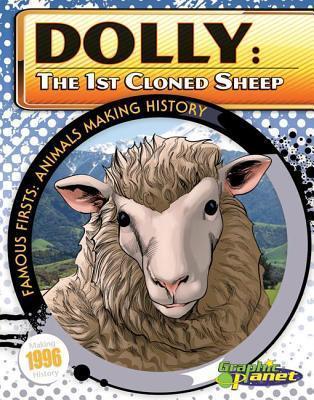
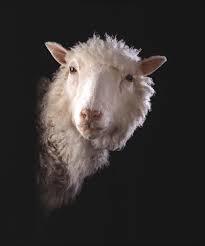
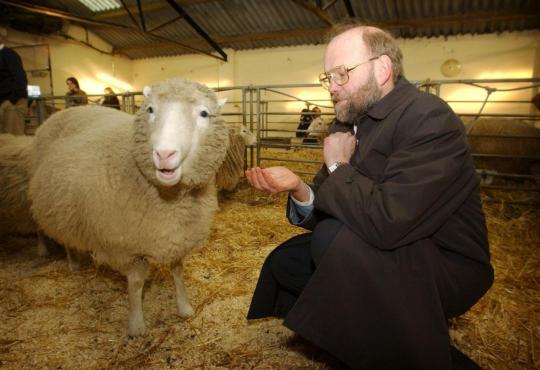

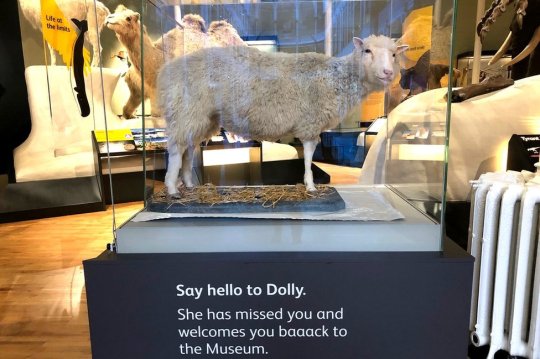
On July 5th 1996 Dolly the sheep was born, the first mammal cloned from an adult cell.
When scientists working at the Roslin Institute in Scotland produced Dolly, she was only lamb born from 277 attempts,from those rom 277 cell fusions, 29 early embryos developed and were implanted into 13 surrogate mothers. But only one pregnancy went to full term, and the 6.6 kg Finn Dorset lamb 6LLS, that’s Dolly to you and I, was born after 148 days, they never announced her birth for six months until February 22nd 1997.
Dolly the sheep was produced at the Roslin Institute as part of research into producing medicines in the milk of farm animals. Researchers have managed to transfer human genes that produce useful proteins into sheep and cows, so that they can produce, for instance, the blood clotting agent factor IX to treat haemophilia or alpha-1-antitrypsin to treat cystic fibrosis and other lung conditions.
This was a major news story around the world, Dolly even appeared on the cover of Time magazine!
Dolly spent her whole life living in a flock of sheep at the Roslin Institute. She had six lambs with a Welsh Mountain sheep named David. Their first lamb, Bonny, was born in the spring of 1998. Twins, Sally and Rosie, followed the next year and triplets, called Lucy, Darcy and Cotton, the year after that.
In the autumn of 2001, Dolly was seen to be walking stiffly. X-rays confirmed that Dolly had arthritis. It fuelled the suspicion that cloned animals were destined to age prematurely. The cause of the arthritis was never established but daily anti-inflammatory treatment resolved the clinical signs within a few months.
Dolly remained healthy until Monday 10 February 2003, when an animal care worker reported that he had noted her coughing. Full veterinary examinations and blood tests were conducted but failed to establish a diagnosis. A CT scan was carried out on 14 February 2003. The scan confirmed the team's worst fears: tumours were growing in Dolly's chest.
Since a general anaesthetic had been necessary to perform the CT scan it was decided that it would be best if Dolly did not regain consciousness and she was put to sleep at the age of six.
Dolly captured the public imagination and was donated to National Museums Scotland by the Roslin Institute. She has been on display at the Museum in Chambers Street Edinburgh since 2003 and is popular with visitors of all ages.
41 notes
·
View notes
Note
I have to reread slow paced envy again 😭 also, I'd like to ask, what is Wales and Fem England's relationship like?
He's forever chiding her, she's forever ignoring him and his advice. In my personal headcanon I have Wales as the oldest of the bunch, so in the way he treats everyone he is Mr Grump and always has a lecturing tone on, but he also does a huge amount of looking out for everyone. You need a jail break? Oh look there's Rhys. You need money? Oh look Rhys just found another gold mine. You need someone to flush your opioids down the toilet (don't do this please)? Oh look Rhys is already pulling the handle.
He's the do-er of the family. Like his sister, he likes farming, gardening, growing things... he's also very good at killing. He likes travelling, which is ironic because the Welsh were the most likely of the four nations to stay put (with some notable Argentine exceptions...). But like his siblings he feels totally helpless and voiceless, so he takes back power and agency where he can - being a lecturing worry wart and a good soldier. He has the weakest realtionship with the kids, but yes. He likes sheep. Oz and Zee and Eva and Rhys all bond over this. Generations repeat.
He remembers Britannia best, and its his stories that Evelyn loves the most. He's very gentle normally, and never grows angry. Lullabies that maybe Evelyn thought were her mother's are actually her older brother, singing to stop her weeping so much. He tries very hard to keep her on the straight and narrow but either his sister out stubborns him or he isn't around in the first place and comes back to a right mess each time. She needs him around, more than she ever would admit.
#q&a#fanfic ask#i hope you enjoy the re-read!!#i hope its good for a re-read - some things coming up over and over again
6 notes
·
View notes
Text
youtube
Aderyn - 'Chip Shop Boy' (Official Video)
'Do you want Salt n Vinegar on them?' Cardiff Indie Grunge Pop Artist 'Aderyn' returns with fantastic new single 'Chip Shop Boy' which is available now everywhere! With hooky riffs and euphoric chord changes 'Chip Shop Boy' will make all your Chippy Dreams come true, and is certainly 'Aderyn's' strongest single to date. Love it!
Aderyn says “Chip Shop Boy is a song about the rush of first having a crush on someone, and how those daydreams can make the mundane feel magical.” Chip Shop Boy is available on all streaming sites and bandcamp, and will be released on CD and cassette as part of Aderyn’s debut EP Sea Glass on 14th September.
Chip Shop Boy was written about Aderyn's infatuation with the boy who worked at the local chip shop during Covid lockdown. Aderyn says: “The chippy was the only place open in lockdown, and my imagination ran wild with blissful visions of our future together. It turned into this really fun song thats always a big crowd pleaser on tour.” Chip Shop Boy is an irreverent and irresistibly fun indie pop song with moments of Pavement inspired guitars, and more hooks than a fisherman. Aderyn also played all the drums on the track, which was recorded in West Wales with producer Gethin Pearson (Orla Gartland, Charli XCX, Adwaith).
Aderyn will play Gwen Gwen Festival this summer. Chip Shop Boy is the second single from Aderyn's debut EP Sea Glass, out 14 September
Cardiff’s “Queen of Indie Pop” (Radar Mag), Aderyn grew tired of life on a Welsh sheep farm and left home at 16 to be a drummer in a grunge band. Now striking out on her own in her first solo project, Aderyn’s music weaves together irreverent hook laden pop, with a scuzzier grunge influenced sound. Aderyn won the Welsh Music Prize Triskel Award in 2022.
Buy 'Chip Shop Boy' Here
https://song.link/gb/i/1693584395
2 notes
·
View notes
Note
Such a cool topic! Yeah the old italian problem I assume applies to nearly all european national dishes (we didn’t have potatoes once upon a time??). I think basically all the ‘classic’ welsh dishes are post-medieval.
The 14th c diet would have been v similar to mid/southern English, excluding influence of more hills and sheep farming (already big by 14th c), so you can really look around widely. Obviously it would have been super difficult without some sort of grain finding its way into your bowl. For those living a settled life, gruel was defintely the default (as in Poland or anywhere in Europe I assume).
Local texture I can add is walking up a local mountain/hill, the Blorenge (rhymes with Orange!!!!), with my father and collecting what we’d call wimberries (commonly: bilberry, in Welsh: lluen). These aren’t grown commerically and were v likely there in 14th c. Tiny, blue, and tasty in a grassy way.
Today’s ‘welsh cakes’ are clearly products of a later age, but the idea of cooking things on a large slab of slate/stone/etc called ‘bakestones’ (‘bake stones’ are confusingly something else) is something that we could reasonably imagine being v old. Probably something like an oatcake was the proto-welsh cake. The bakestone itself might be a fun weapon in a pinch for dnd.
So yeah, a bilberry oatcake baked on a stone. An authentic treat from South Wales 14th c, maybe.
I've never used hogweed in cooking! What would you reccomend? Oh but yeah we do have shit tons of garlic, as in most of Europe. The local castle, Castell Coch, (a weird and cool 19th c pseudo-medieval build today, but was around in 14th c too), is just surrounded absolutely everywhere by the smell of wild garlic. I use the leaves in a stir-fry instead of spinach.
Omg this is all very interesting thank you for writing so much :0c!!! I really appreciate the info about bilberries and welsh cakes and bakestones, this is all so so cool!!
And to be honest i have also never used it myself jdbdjf i just have a very hazy memory of my grandma collecting and drying it in the kitchen but i have no idea what for :'3. But ive seen it in some foraging videos now and apparently you can pickle the leaves and also use em as greens in soups ect, also spinach like... and i made a mistake as well, giant hogweed was indeed imported only in the 19th century but common hogweed is native to europe and is actually where the name for one of my favourite soups "barszcz" comes from... it was originally made from that plant i had no idea :0c bc nowdays its commonly made with beets...
#ask#barking#very cool thank you again for all the info!!#i dont know much about foraging or native plants and i havent done it at all =w=#most of my food autism until now has been centered on chinese cuisine#i got interested in european medieval food very recently and i havent had time to read much about it#it makes me so excited that my head hurts jdjdid i need to pace myself
2 notes
·
View notes